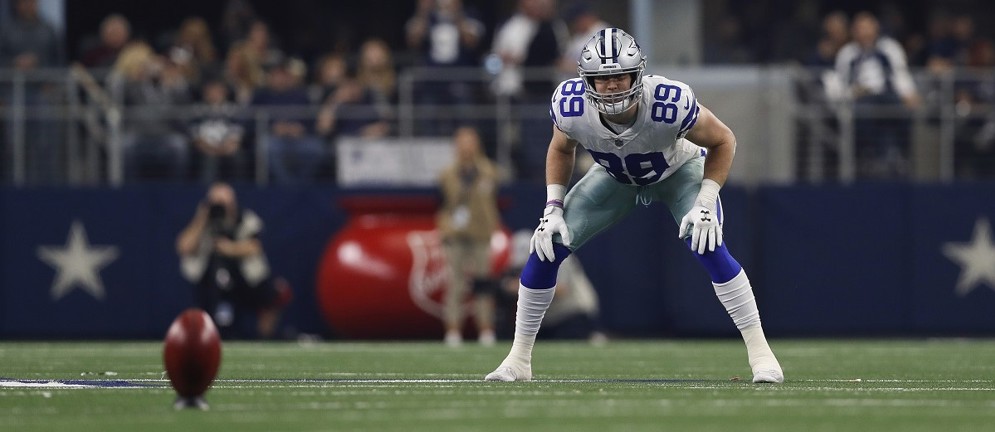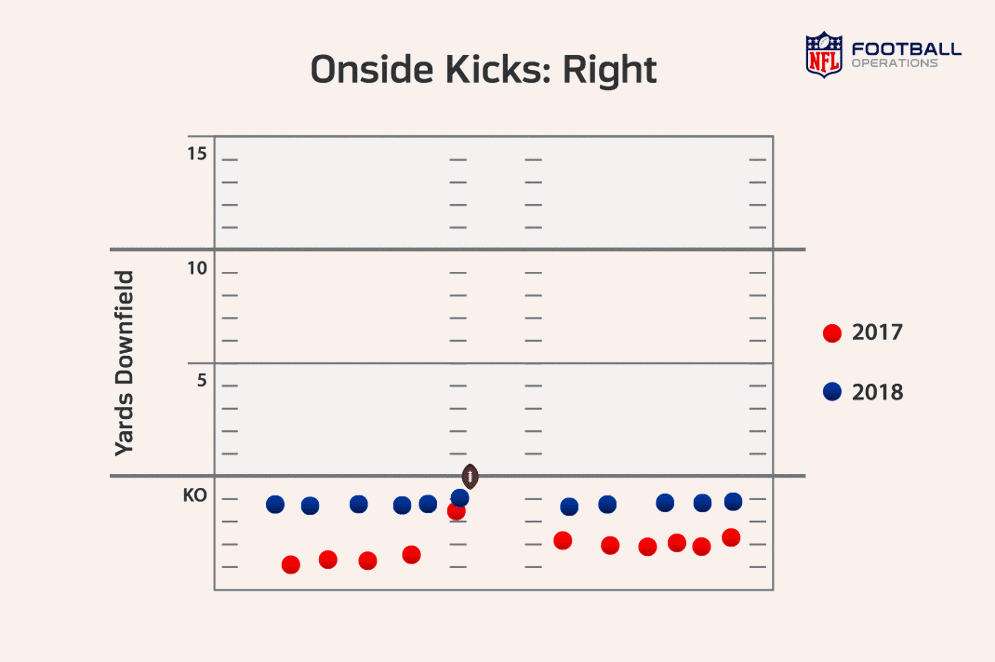The Extra Point What Can Player Tracking Data Tell Us About the Onside Kick?
October 2, 2019

Throughout NFL history, it wasn’t uncommon for kickoff teams to line up like they were kicking deep, only to shock both fans and opponents with an onside attempt. Famously, Thomas Morstead of the New Orleans Saints surprised the Indianapolis Colts at the start of the second half of Super Bowl XLIV with an onside kick (one that the Saints recovered). In total, from the start of the 2010 season through the 2017 season, the league averaged 9.4 surprise onside attempts per season.
In 2018, however, there were only five surprise attempts. Through the first four weeks of 2019, we’ve only seen one.
The likely culprit? Changes to the NFL’s kickoff rules.
Prior to the 2018 season, NFL Player Health and Safety and special teams coaches worked together to reimagine the kickoff play — one designed to increase player safety — resulting in a multitude of changes regarding player alignment and allowable blocking types. Concussions on kickoff plays dropped by 35 percent in 2018, but the formation redesign potentially made it more difficult to recover onside attempts. In addition to the drop in surprise onside kicks, the kickoff team has only recovered 6.1 percent of non-surprise attempts since the start of 2018, a rate lower than the league’s historical average of 12 percent. In 2019, teams are 0-for-9 at onside kick attempts through Week 4 (not including recoveries that were nullified by penalties).
During last year’s offseason meetings, the NFL’s Competition Committee debated the merits of a follow-up rule change, proposed by the Denver Broncos, that would have given teams the opportunity to use one scrimmage play per game in place of an onside kick. Although the proposal was not adopted, our football data and analytics crew was able to provide the Committee with insight into how and why onside kicks have changed.
Check out the below animation, which overlays Next Gen Stats tracking data on onside attempts for the kickoff teams and the football, averaged over the course of each of the 2017 (pre-kickoff changes) and 2018 seasons (post-changes). Dots in red correspond to players in 2017, while the blue dots represent players in 2018. Only onside attempts to the kickoff team’s right side are included.

Three differences stand out.
First, there are six red dots on the right side, compared to five blue dots. As part of the kickoff rule changes, five players must now line up on each side of the kicker.
Second, players on the kickoff team may no longer get a running start, which is why the blue dots (2018 season) begin the play standing still.
Finally, and perhaps most importantly, without the running start, players from the 2018 season are no longer able to get down the field as quickly, giving them less of an advantage over the receiving team.
Altogether, each of the above findings provide an explanation for why we are seeing fewer surprise onside kicks and lower recovery rates. Although Denver’s proposal for an alternative did not pass last year, the NFL will continue to use analytical insight to drive potential rules changes.